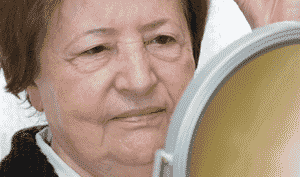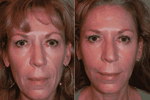How often have we heard this phrase? Sometimes it’s from other people, and sometimes it’s from our own internal voice. But what exactly is it that makes us look tired?
Our faces play a big role in how we communicate, and this isn’t just by the words coming out of our mouths. Our appearances play a large role in how we communicate non-verbally. You may have heard that when communicating with others, only 7 % of the actual words come across. Our vocal tone accounts for 38% of what is perceived by others, and our non-verbal communication accounts for 55%.
This non-verbal communication of the face is based on two key areas: the eye region and the mouth region. These two areas give the biggest impact on how the world perceives us, and the aging process cause changes in these areas that result in us “looking tired.”
The Eye Region
As I’ve written about previously when discussing the 3D’s of aging, as we age, our skin deteriorates, our faces loose volume and fullness, and, with that lack of the volume, our faces tend to descend.
The eye region specifically is affected by the descent and volume loss that occurs with aging. Our upper eyelids and eyebrows can become heavy and droop into our vision. This is one factor that makes us look tired with age.
Volume loss that occurs with aging can sometimes cause the eyelids/eyebrows to become heavy. This can give the appearance of being tired.
Another factor involves the lower eyelid bags and Festoons that appear with age. Both of these changes connote an appearance of being tired or sick, even when we feel fine inside.
Lower eyelid bags or Festoons can also make a person look tired or sick, even when they are feeling fine.
Thankfully, these conditions can be helped with a variety of non-surgical and surgical procedures that can lift drooping brows, clean up heavy eyes, fix the protruding fat in the lower lid, and tighten the loose skin causing the Festoons.
The Mouth Region
The second way aging causes us to look tired is due to the volume loss that occurs in our face as we age. The aging process affects the normal, youthful fat compartments in our face, causing some areas to lose their fullness and some to gain more fullness. It also affects our teeth and the bones in our face, which change and rotate as we age.
Take a look at these photos, where we can see the loss of volume around the nose as a person ages. See the larger opening in the second picture; the nose seems to sink into this opening, causing the lines from the nose to the corner of the mouth to deepen with age.
In these photos we can see the loss of volume around the nose.
By restoring lost volume in the face, it is possible to reverse these effects:
Treatments that restore lost volume in the face can reverse these aging effects.
The Takeaway
The aging process unfortunately can change our faces in ways that make us “look tired,” both to others and to ourselves. By understanding better how our subconscious mind influences our conscious perceptions, we also learn how these perceptions can be improved. If you are frustrated with the changes in your own appearance, there are ways I can help you to Restore, Reveal and ReclaimTM your natural beauty through a range of cosmetic treatments.
References:
Kahn DM, Shaw RB., Jr. Aging of the bony orbit: a three-dimensional computed tomographic study. Aesthet Surg J. 2008;28:258–264
Bryan Mendelson and Chin-Ho Wong, Changes in the Facial Skeleton With Aging: Implications and Clinical Applications in Facial Rejuvenation. Plast Reconstr Surg. 2007 Feb; 119(2):675-81; discussion 682-3.




